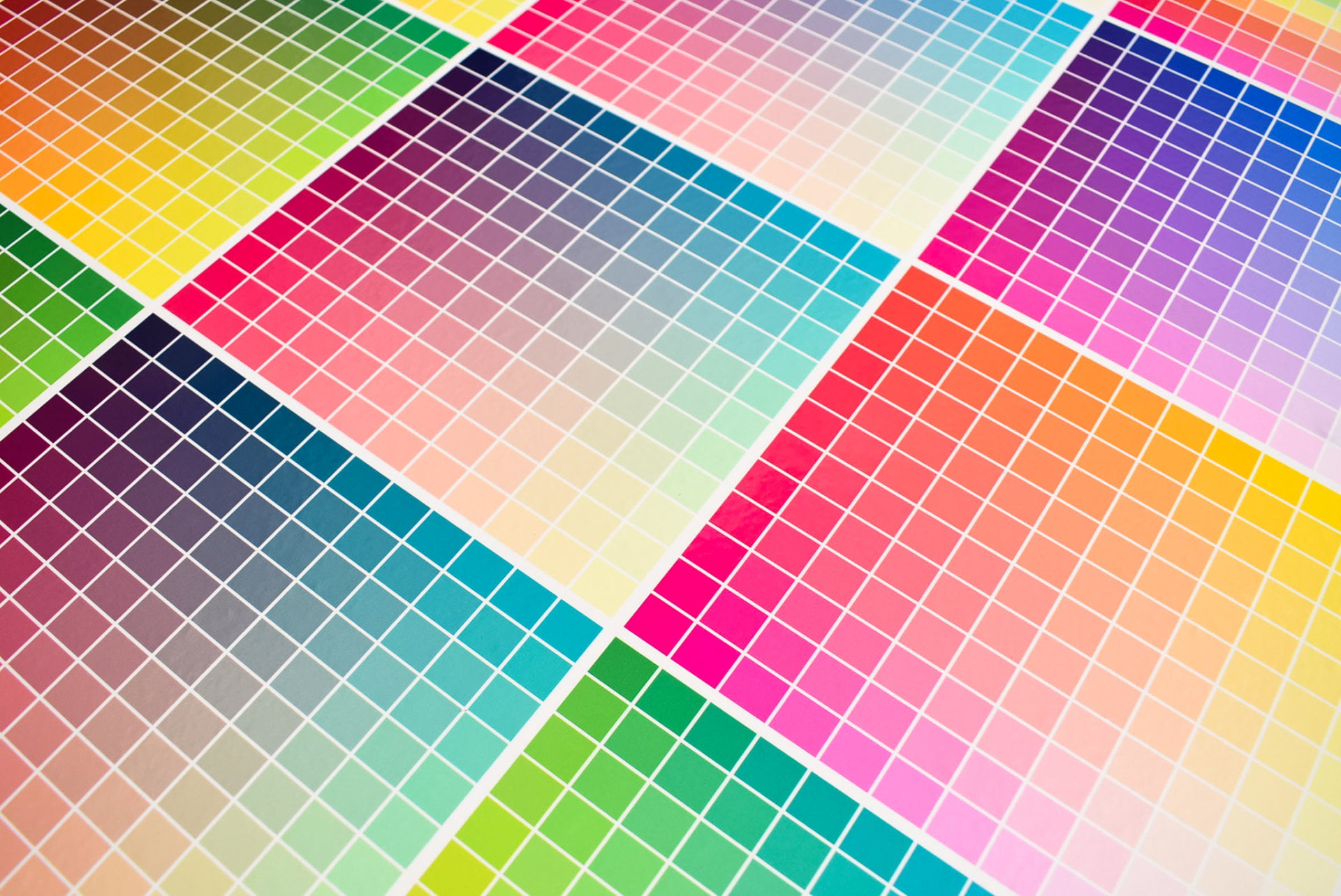
This is the first of three articles explaining signs and display graphics colour management. The series is written for creatives and decision makers handling artwork design for all types of signage.
Replicating colour on signs and display graphics demands an understanding of colour setup. In addition to signmaking methods and materials. Especially when transferring images across varied surfaces using different production processes.
Over the three articles, I’ll explain the practicalities of replicating your choice of colour on your end product as close as possible. As well as describe colour production methods for signs and display graphics using paints, inks and adhesive vinyl.
The existence of colour requires three components, as expertly described in Graphic Design and Print Production Fundamentals by Alan Martin. These active components are the object, the luminant and the observer.
Colour is wavelengths of light which we absorb through our eyes. Surfaces emit, absorb or reflect light in different quantities, enabling the majority of human eyes to see hundreds of thousands of separate colours.
Individually, we see colour differently. Remember the wedding dress debate?
Varying degrees of light also affects our perception of colour. The colour of an exterior sign panel will change during the day. Similarly, different lighting angles will alter the appearance of identical interior wall graphics.
Transparent surfaces such as glass can dilute colour applied on top. Inversely, opaque backgrounds such as black vehicle panels can muddy lighter colours applied on top. In some circumstances, applying a base layer first obscures the background surface and allows a true likeness of the foreground colour.
Finishes also affect how colour appears on signs. One colour with separate gloss, satin and matt finishes will create three noticeably different results. Effects such as metallic and pearlescent alter the appearance of colour too.
With so many finishes, surfaces, environments and opinions, accurately replicating colour can be a minefield. Understanding and accepting inevitable variables when colour matching across differing surfaces avoids confusion and disappointment. Despite challenges, there are ways to minimise these variables.
Consider where your colour palette will be when planning a visual brand, creating artwork or painting premises. Exterior and interior signage, vehicle graphics, digital screens and devices, packaging, garments plus innumerable other platforms use particular colour spaces. More on colour spaces in the following article.
When your choice of colour has been created digitally (RGB) or predominantly viewed on platforms such as mobile phones and laptops, choose a non-digital equivalent. Select from a paper Pantone chart, a coloured vinyl or a paint swatch. Alternatively, reference a tangible item (such as a nation’s flag) where colour information can be universally accessed.
Before finalising your colour palette, be pragmatic.
Consult your graphics professional early in your colour selection stage.
It’s also sensible to discuss production methods before approving your choice of colour. As well as realising costs, durability, and materials available for your signs and display graphics.
Your graphics professional should explain which colour production method is most suitable for your end product(s). You’ll then have options to adjust your colour palette to achieve close matches across digital and tangible platforms.
Signs and display graphics colour management begins with an understanding of colour production limitations.
In turn, colours are selected from the colour space connected to the end products’ manufacturing process. Colour inconsistencies occur when your colour palette doesn’t exist within the products’ manufacturing process.
Seek advice. Ask your signmaker or commercial printer for colour samples on your selected materials. Test the samples in the space where your signs and display graphics will end up. Necessary colour adjustments can be made at this stage.
Now read the following article to understand colour spaces in signmaking.